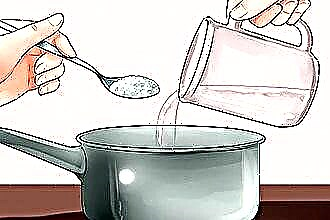The inflammatory process, which is localized in the frontal sinus, is called frontal sinusitis. This is the most dangerous type of sinusitis, which, however, is not surprising given the proximity of the frontal sinuses to the eyes and the anterior cranial fossa. There is a high probability of complications that can even lead to death.
Acute frontal sinusitis, the symptoms of which are quite extensive, for the most part develops against the background of general signs of intoxication of the body (high temperature, chills, weakness). Unlike the chronic form, it is characterized by a vivid manifestation of symptoms. As for chronic frontal sinusitis, in this case, periods of exacerbation alternate with periods of remission, when the symptoms of frontal sinusitis are almost invisible.
Causes
 So, what could be the cause of the development of such an ailment? First of all, this is incomplete or incorrect treatment of the common cold. One should not forget about the role of bacteria (for example, staphylococcus). In a normal state, pathogenic microbes are present in the body in minimal quantities and do not cause any harm to it. However, even a slight decrease in immunity can provoke their active reproduction and rapid growth.
So, what could be the cause of the development of such an ailment? First of all, this is incomplete or incorrect treatment of the common cold. One should not forget about the role of bacteria (for example, staphylococcus). In a normal state, pathogenic microbes are present in the body in minimal quantities and do not cause any harm to it. However, even a slight decrease in immunity can provoke their active reproduction and rapid growth.
The child can also develop frontal sinusitis. For the most part, such a disease in young children develops against the background of scarlet fever, tonsillitis, diphtheria, measles and some other diseases. Another reason is adenoids (abnormal enlargement of the tonsils in the nasopharynx). Such changes are triggered by some viral diseases. They cause swelling of the mucous membrane, blockage of the fistula of the nasal passage and the paranasal sinus.
Frontitis can appear as a result of mechanical stress (head and nose trauma). An adequate reaction of the mucous membrane will be inflammation and swelling. As a result, normal nasal breathing is disrupted and, as a result, the frontal sinuses become inflamed.
Risk factors should also be highlighted. They significantly increase the likelihood of frontal sinusitis:
- chronic ailments of the upper respiratory tract;
- poor functioning of the immune system;
- allergic rhinitis, that is, rhinitis;
- polyps and cysts within the nasal cavity and sinuses;
- anatomical defects of the nose (congenital or acquired).
The first symptoms of frontal sinusitis
The most common cause of this disease is not fully cured acute respiratory infections. In this regard, the first manifestations of inflammatory processes in the frontal sinuses will be very similar to the signs of an ordinary seasonal cold. We are talking about pain in the nose, an increase in temperature to subfebrile values (38-39 degrees). In addition, the patient may have nasal congestion, discharge of transparent secretions and general weakness may appear.
 It is easiest to eliminate signs of frontal sinusitis in adults at the initial stages of the development of the disease. In this case, it is even possible to abandon antibiotic therapy and get by with local drugs. To quickly relieve inflammation and swelling, regular rinsing of the nose at home is enough.
It is easiest to eliminate signs of frontal sinusitis in adults at the initial stages of the development of the disease. In this case, it is even possible to abandon antibiotic therapy and get by with local drugs. To quickly relieve inflammation and swelling, regular rinsing of the nose at home is enough.
But you need to act without delay, otherwise there is a high probability of transformation of an acute form into a chronic one with the formation of extensive purulent foci. It takes several months to treat advanced frontal sinusitis. At the same time, the risk of relapses and dangerous intracranial and orbital complications is not excluded.
The first manifestations of inflammatory processes in the frontal sinuses are very difficult to identify. If a runny nose and nasal congestion do not go away for a long time, chills and general malaise appear, consult a doctor immediately. Only he will be able to make an accurate diagnosis and choose the optimal rehabilitation course, taking into account the individual characteristics of the patient.
How does acute frontalitis manifest?
Frontitis, the symptoms of which become more intense as the disease progresses, can be acute or chronic. In acute inflammation of the frontal sinuses, the symptoms will be as follows:
 The appearance of severe headaches. This is due to the concentration of purulent accumulations in the sinuses. The intensity of pain decreases in a horizontal position, because the contents of the sinuses are evenly distributed throughout the sinus.
The appearance of severe headaches. This is due to the concentration of purulent accumulations in the sinuses. The intensity of pain decreases in a horizontal position, because the contents of the sinuses are evenly distributed throughout the sinus.- There may be a feeling of excess pressure in the bridge of the nose. As the disease progresses, the pain ceases to focus only on the bridge of the nose and spreads beyond it. Therefore, the whole head begins to ache.
- With frontal sinusitis, pain is also concentrated on the face - directly in the area of the affected frontal sinuses. If you ignore the problem for a long time and do not perform treatment, discomfort is localized in the back of the head and temples. Often, sinusitis (inflammation of the maxillary sinuses) accompanies frontal sinusitis.
- A large amount of transparent secretion (mucus) with an unpleasant odor is released from the nose. Gradually, a purulent focus forms in the sinus, and the mucus becomes yellow-green in color. The amount of secretion increases when the patient is standing, that is, in an upright position.
- Intoxication of the body is accompanied by chills, general weakness and fever up to 39 degrees. As the infectious focus grows, the body is poisoned with the waste products of the pathogenic microflora.
- From the frontal sinus, mucus enters the oropharynx. For this reason, a cough appears. The patient tries to cough up mucus. Attacks of nausea and vomiting are possible.
- Rapid fatigue appears even after minor physical exertion, apathy, deterioration in appetite and sleep are noted. In some cases, the acuity of smell and vision may be noticeably reduced.
- The patient has a fear of bright light, frequent lacrimation.
The acute form lasts about three weeks on average. Improper treatment (or its complete absence) blocks the frontal-nasal canal, and the disease itself is transformed into a chronic form.
Signs of chronic frontal sinusitis
 Now let's talk about the chronic form. Chronic frontal sinusitis in children, the symptoms of which are not so bright, may occur due to incomplete cleansing of the frontal sinuses from pathological contents. The low severity of the symptoms of the chronic form often does not allow a quick accurate diagnosis. Therefore, hardware diagnostic methods come to the rescue (radiography, computed tomography, endoscopy, rhinoscopy, and so on).
Now let's talk about the chronic form. Chronic frontal sinusitis in children, the symptoms of which are not so bright, may occur due to incomplete cleansing of the frontal sinuses from pathological contents. The low severity of the symptoms of the chronic form often does not allow a quick accurate diagnosis. Therefore, hardware diagnostic methods come to the rescue (radiography, computed tomography, endoscopy, rhinoscopy, and so on).
The manifestations of rhinitis in this case can become more intense during the period of exacerbation and completely disappear during remission. In contrast to the acute form, in chronic frontalitis, headaches appear much less frequently. Therefore, this symptom ceases to be key. However, the pains do not completely go away and from time to time they still remind of themselves with unpleasant sensations of a bursting and aching nature.
One of the key signs of chronic inflammation of the frontal sinuses can be called a prolonged runny nose. It cannot be eliminated by traditional means. In this case, a bad-smelling purulent mucus is released. Typical manifestations of the chronic form of frontal sinusitis will be as follows:
- decreased sense of smell (or its complete absence);
- inflammatory eye diseases such as conjunctivitis;
- swelling of the eyelids and cheeks after a night's sleep;
- a cough that antitussive medications cannot cope with;
- general weakness, weakness, fatigue;
- in some cases, polyps and cysts may appear.
What symptoms appear in children
 The difficulty in determining the signs of frontal sinusitis is that children cannot accurately indicate the place where it hurts. Therefore, self-diagnosis at the initial stage is impossible.As a rule, the most common rhinitis becomes the key cause of inflammation of the frontal sinuses. The acute form of the disease manifests itself as childish moodiness, fever, insomnia and general weakness. The child's nose is stuffy, he cannot concentrate and gets tired quickly after minor exertion.
The difficulty in determining the signs of frontal sinusitis is that children cannot accurately indicate the place where it hurts. Therefore, self-diagnosis at the initial stage is impossible.As a rule, the most common rhinitis becomes the key cause of inflammation of the frontal sinuses. The acute form of the disease manifests itself as childish moodiness, fever, insomnia and general weakness. The child's nose is stuffy, he cannot concentrate and gets tired quickly after minor exertion.
But do not forget that all of the above symptoms can also indicate a cold. Therefore, at the first suspicion of frontal sinus inflammation, you should pay attention to the following signs:
- dry mouth;
- pallor of the facial skin;
- swelling of the skin;
- headache that worsens when the head bends;
- change of voice timbre (nasal);
- pain in the forehead while feeling;
- discharge from the nose of purulent mucus with a pungent unpleasant odor;
- frequent lacrimation;
- redness of the eyes;
- severe attacks of morning cough;
- conjunctivitis (but not always).
The key feature of frontal sinusitis in children can be called the secrecy and dim severity of symptoms. The use of standard drugs for the common cold reduces the intensity of the manifestation of symptoms, but the disease itself does not eliminate. For this reason, the initial stage is often complicated by otitis media (inflammation) of the middle ear.
To accurately establish the cause of poor health and confirm / deny the presence of frontal sinusitis, ultrasound is used.
Prophylaxis
 Thanks to preventive measures, you can significantly reduce the risk of inflammation of the frontal sinuses. This applies to both adults and children. First of all, create all the necessary conditions for the effective treatment of seasonal ailments - flu, colds, rhinitis, and so on.
Thanks to preventive measures, you can significantly reduce the risk of inflammation of the frontal sinuses. This applies to both adults and children. First of all, create all the necessary conditions for the effective treatment of seasonal ailments - flu, colds, rhinitis, and so on.
Concentrate on boosting immunity. This is extremely important, since the pathogenic microflora is actively developing in a weakened body. Tempering will help you (regular contrast showers and cold rubdowns). It is never too early and never too late to do this. The main thing is to adhere to the principle of consistency.
Introduce foods containing vitamins and minerals into your diet. This is especially true in the autumn-winter period - the time when epidemics of influenza and SARS are raging.
According to doctors, it is necessary to ventilate living quarters every day. This will help cleanse them of harmful bacteria. In addition, try to adhere to optimal values of air humidity (the easiest way is to regularly wet cleaning).
 As a rule, by the beginning of spring we arrive with a significantly weakened immune system. Physical inactivity, colds - these and many other adverse factors increase the risk of inflammation of the nasal cavity and, in particular, the frontal sinuses. Daily nasal rinses with seawater-based solutions (you can buy them at any pharmacy) will come to your aid. This, by the way, will help to quickly stop frontal infections in the initial stages, when extensive infectious foci are not formed.
As a rule, by the beginning of spring we arrive with a significantly weakened immune system. Physical inactivity, colds - these and many other adverse factors increase the risk of inflammation of the nasal cavity and, in particular, the frontal sinuses. Daily nasal rinses with seawater-based solutions (you can buy them at any pharmacy) will come to your aid. This, by the way, will help to quickly stop frontal infections in the initial stages, when extensive infectious foci are not formed.
Now you know how the acute and chronic form of frontal sinusitis develops and manifests itself - forewarned means forearmed. But do not forget, only a doctor can accurately make the correct diagnosis. And in some cases, hardware diagnostics of the frontal sinuses may be required.
Lead a healthy lifestyle, give up bad habits, treat colds to the bitter end. All this will help you protect yourself and your family from frontal sinusitis and other types of sinusitis.

 The appearance of severe headaches. This is due to the concentration of purulent accumulations in the sinuses. The intensity of pain decreases in a horizontal position, because the contents of the sinuses are evenly distributed throughout the sinus.
The appearance of severe headaches. This is due to the concentration of purulent accumulations in the sinuses. The intensity of pain decreases in a horizontal position, because the contents of the sinuses are evenly distributed throughout the sinus.

